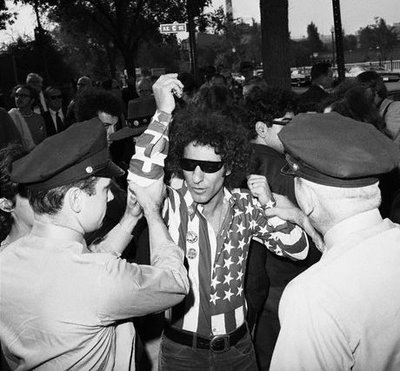
A little after 8pm on April 12th, 1989, Michael Waldron peered through the window of the cinder block turkey coop he rented to Abbie Hoffman off Sugan Road in Solebury. Abbie’s girlfriend Johanna hadn’t been able to reach him all day, so she’d asked Waldron to check on him. He saw Abbie in bed and rapped his hand against the glass to wake him up. When Abbie didn’t respond, Waldron used his key to open the door.
“Abbie, Abbie. Come on. Johanna’s on the phone. She wants to speak to you. Get up.”
He found Abbie curled up under his quilt, fully clothed in a red plaid flannel shirt and corduroy pants, his hands above his head. He looked comfortable, as if taking a nap. His body was cold.
Sometime the night before he canceled a speaking engagement at Loyola College, sent in his taxes, and dissolved 150 pills of phenobarbital into a glass of Glenlivet. He followed it with four or five more glasses, and tucked himself into bed. He may have put on his favorite movie, The Godfather (found in his VCR) while he slipped into a coma and died in his sleep at the age of 52. In the hours and years that followed, his friends, his family, and the generation he inspired have struggled to make sense of his death.
Was it an accident? Or was it a message, one last act of political theater whose meaning we struggled to grasp?
The newspapers that eulogized him followed a nearly identical narrative: While his old friends had turned from Yippies to yuppies, Abbie Hoffman struggled to remain the wild-eyed activist that helped organize the riotous protest at the 1968 Democratic National Convention and once disrupted trading at the New York Stock Exchange by throwing fistfuls of fake dollar bills from the gallery onto the trading floor. He was getting old and losing steam. The years he spent living underground had taken their toll, and he had been diagnosed with manic depression in 1980. Without fail, the papers rattled off the normal marks of age he experienced as a 52-year-old man (a bald spot, a paunch, an injured foot that just wouldn’t heal) as if for Abbie Hoffman middle age was a particularly terrible affliction.
But how did this all this add up in a way that led to suicide? He had been taking lithium to manage his manic depression, but his brother said Abbie had been experimenting with alternative treatments. He was also writing a book about it, chronicling his changing moods (200 pages of the manuscript were found in his apartment). He had told people he was upset about his elderly mother’s diagnosis with late stage lymphoma, but was that enough to drive him to take his own life?
His friends and family told a different story. Despite his occasional boughts of depression he was always full of energy, only sleeping a few hours a night. He was making plans for the future, was still writing and lecturing, and his fighting spirit hadn’t waned. It was inconceivable that Abbie, a prolific writer and expert media manipulator, would have killed himself without leaving the note.
The Philadelphia Inquirer reported that radical lawyer William Kunstler, who defended Hoffman during the Chicago Seven trial, compared Hoffman’s death to the self-immolation of Bhuddist monks during the Vietnam War. “If he did [commit suicide], it was probably a personal protest of his own.”

Abbie Hoffman: Jewish Road Warrior
Older news articles from before his death depict Hoffman’s struggles with middle age, still fighting the good fight with great determination, refusing to relent to the forces of commercialism that tempted him to cash out and retire. A 1986 article in the Philadelphia Inquirer reports:
The forces of commercialism are pursuing him, apparently in vain. The Disney people called him last spring about doing an ad on MTV for the film Ruthless People, but he said no. Friends have told him that he’d be a hot item if he did an anti-drug ad. No way, he says. Hollywood has even sent screenwriters to live with him, in the hope of doing a flick on his life. Another washout.
He wouldn’t mind a movie – as long as it hewed to his left-wing line. The problem is, Hollywood keeps messing with his story. “The last time the writers tried,” he moans, “they had me as a gay dope-dealing comedian. This was maybe four years ago. They gave me a male literary agent and put us in bed. Now, I got nothing against gays, but that ain’t me, and when I asked them about it, they said there was a ‘big gay constituency’ out there. Give me a break. If I played the game, I could be a millionaire.”
Hoffman refused to sell off his principles. He made about $60,000 each year from the college lecture circuit, but he gave most of it away to the causes he supported. When he died his estate consisted of an $8,000 checking account, a motor boat, and a %15 share of a property his father left him. According to his lawyer Gerald Lefcourt, Hoffman had “turned over hundreds and hundreds of thousands of dollars in his life – maybe millions – and he gave it all away.”
He did experience what he described as a mid-life crisis, but he tried to work through it. While many of his old activist companions went yuppie (Jerry Rubin got rich as a business man, Tom Hayden got elected to the California State Assembly), Hoffman never gave up the cause. In 1986 he told Dick Polman of the Philadelphia Inquirer:
“Know that flick, The Road Warrior, where the character Mad Max is fighting alone for justice in a postnuclear world? Trying to hold on to his can of gasoline so he can keep going? That’s me, man. I’m the Jewish Road Warrior, and it’s lonely out there with just a can of gasoline. I’m the Jewish Road Warrior, and I don’t fit in.”
Hoffman stuck with it, protesting against the CIA, the involvement of the US military in South America, and campaigning for environmental issues. In February, 1987, he told the New York Times, ”I have the fire in the belly. But I’m in it for the long haul. I’ll be doing for the next 25 years what I’ve done for the last 25”. Little more than two years later, however, he was dead.

Del-AWARE in The Lambertville Beacon - June 20th, 1985
Save the River – Dump the Pump
In Bucks County, Abbie Hoffman is most remembered for his involvement in the campaign prevent the construction of a pump that would draw millions of gallons of water from the Delaware River for the Philadelphia Electric Company’s Limerick nuclear power plant. He joined a local group, Del-AWARE Unlimited, and worked with them to mobilize against the project. With his help, the residents of Bucks County passed a non-binding resolution to stop the pump project in 1983. The pump activists later played a pivotal role in the election for County Commissioners, voting out the Republicans in power and replacing them with a Democratic majority that opposed the pump. The new commissioners fought a three-year legal battle to stop the project, but lost in court when a judge ruled that Bucks County was bound by their previous contract with Philadelphia Electric to proceed with the project.
The activists responded to this ruling by picketing the construction site and attempting to physically prevent construction of the site. Dozens were arrested and hauled away in buses. The New York Times describes the ongoing protests in June, 1987:
“Each day the trucks and crane and trailer have been met by picketing protesters chanting, ”Save the river, dump the pump,” and carrying signs reading, ”No need, just greed.” Some sat down and blocked the vehicles. One protester climbed up on the mobile crane. Another handcuffed herself to a truck. In all, 66 protesters have submitted to peaceful arrest by helmeted sheriff’s deputies.”
I’ve been told that the activists even set up round-the-clock surveillance of the construction site, watching for any sort of building violation they could report to slow down construction.
Ultimately, the protesters couldn’t bring a halt to the project without the intervention of Governor Casey, who had publicly stated his opposition for the project during his campaign, but didn’t live up to his promise. The pump was built, and you can find it south of Point Pleasant, disguised as a fake historic barn:
Bucks County Legacy
True to his nature, Abbie Hoffman continued to stir controversy even after his death. When Del-AWARE asked to use Washington Crossing Park to hold a memorial service for Hoffman, the request was denied by park commission chairwoman Ann Hawkes Hutton. She thought they shouldn’t be allowed to use the park to honor a drug using former fugitive, at one point saying with regard to his memorial service, “I think we stretch the whole business of free speech a little far.” The group had to bring their request to the full board, who voted to allow it under pressure from the governor’s office of General Counsel.
Veteran’s groups protested the event. Some of them wore fatigues, and they held signs that read “This Land is Red, White and Blue. No Place for Yellow Pinkos” and “Thank You Abbie’s Pharmacist.” The Philadelphia Inquirer described the events as “Sign wavers and stilt walkers, graying hippies and angry war veterans gathered at the banks of the Delaware River yesterday to praise and scorn the controversial life of Abbie Hoffman.” American flags were ubiquitous on both sides. Allen Ginsberg, William Kunstler, Bernardine Dohrn, Richie Havens, and Bobby Seale were all in attendance.
These contrasting opinions extended to other members of the community. At Apple Jack’s in Point Pleasant, where Hoffman organized protests with the members of Del-AWARE, The Philadelphia Inquirer reported the following exchange two days after his death:
Abbie Hoffman In Black And White In A Bucks County Tavern, Polar Opinions
April 14, 1989|By Jeffrey Fleishman, Inquirer Staff Writer
Mention Abbie Hoffman’s name in the Apple Jack Bar and Hotel in Point Pleasant and beer pitchers halt at half-pour.
Some eyes squint hard, others open warm. Twenty years ago, Hoffman helped divide a nation. But it was only six years ago that his brand of Peck’s bad boy radicalism raised hostilities and parted friends along the quiet banks of the Delaware River.
Hoffman is dead. What he did in Bucks County is not.
“You talking about that idiot ass Abbie Gabby?” asked Rocco, clad in blue jeans and denim jacket, his ponytailed hair tucked underneath a yellow construction hat.
“Well, you don’t want to talk to me. I’m a Vietnam vet. If Hoffman had heart and honor, I sure didn’t see it. I just didn’t love the cat.”
Dale Stauffer, owner of Apple Jack, glared at Rocco from under his straw hat.
“If you’re of one viewpoint that’s fine, but you gotta listen to the other side,” said Stauffer, a big man whose beard and bright eyes make him seem younger than his 53 years.
“For me, personally, he fought for the rights of the little person. Sure he did it in crude ways, but sometimes you gotta be crude.
“Abbie was more American than most people,” said Stauffer.
Rocco – he did not want his last name used – bit his lip.
“Dale, you and me we go back a long ways, but we just disagree on this one,” he said. “He called the families of soldiers killed in ‘Nam and said he was glad they were killed. And now they want to make this guy a martyr.”
Rocco was referring to one of Hoffman’s tactics designed to trigger outrage at the war.
During Hoffman’s unsuccessful fight against the Point Pleasant pumping station, he spent many evenings at Apple Jack. He played a lot of pool. Threw some darts.
“He wasn’t a big drinker,” said Stauffer. “Tap beer mostly. He was pretty conservative when it came to drinking and eating.”
Hoffman, usually surrounded by friends, would sit by a window across from the rectangular pinewood bar, at a table that unfolds below an American flag. Today, less than a half-mile from that window, construction workers are building the pump station.
When he wasn’t sipping beers in the dim, basement-level bar, Hoffman and other protesters would gather upstairs in larger rooms of the 300-year-old hotel.
“He was always meeting, always thinking of strategy,” said Stauffer, a founding member of Del-AWARE Unlimited Inc., the main anti-pump group.
When Del-AWARE members were late for a meeting, Hoffman, who lived in Solebury Township and had an apartment in New York, had a special saying. ”He’d say, “Well, this is Bucks time,’ ” said Stauffer. “Bucks time is one or two hours late.”
Del-AWARE was founded in 1981, but until Hoffman joined two years later, it lacked recognition.
“We were climbing mud walls,” said Stauffer, “but then Abbie came and we got the push we needed.”
As far as Rocco was concerned, Hoffman exploited the pump issue for his own gain.
“He was good at gaining national attention and he was intelligent. I’ll give him that,” he said. “But he had no respect for the people who fought in the war.”
Stauffer’s passions for the Vietnam era are less intense.
“During the 1960s, I worked day and night in a foam rubber plant. I barely stuck my head out the door,” he said.
Stauffer, struggling with the contradiction Hoffman had become, said, “He knew when to step on people and he knew when to be easy. He could be nice to you and treat you like dirt. One time he told a girl she had a face like crap.
“The good story is he worked damn hard for the cause of the underdog. We need those kinds of people in this country.”
A couple years ago I went to Apple Jack’s with a friend of mine whose father was involved with the Dump the Pump movement. We saw a Dump the Pump sticker on the wall of the bar, and we got to talking about it with Dale. I asked him about Abbie Hoffman’s involvement, and he told us some interesting things. I learned, for example, that Hoffman insisted that people show up sober to their protest meetings. I asked Dale if he thought Abbie actually killed himself and he responded without hesitation.
“The CIA got him,” he told me, and cracked a smile.

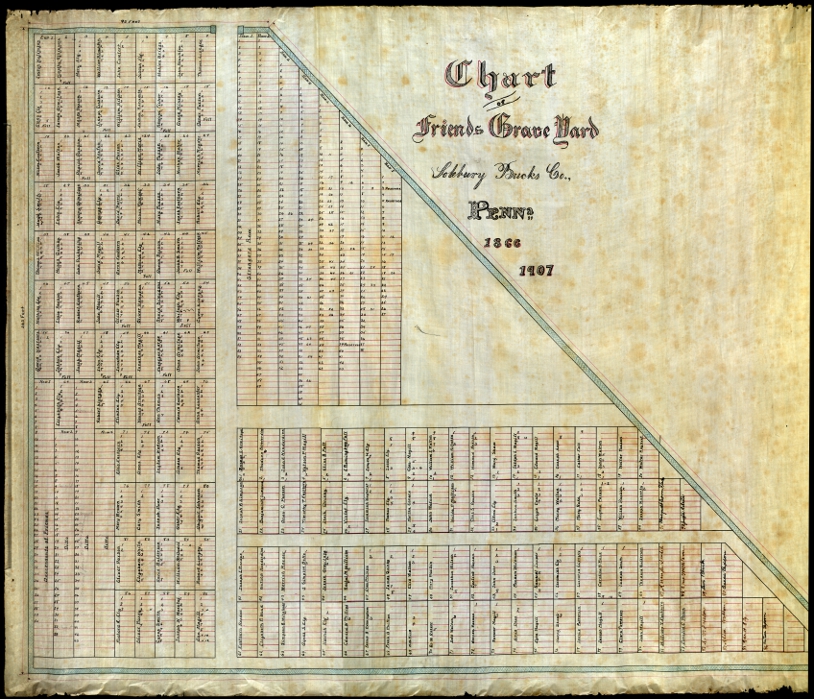
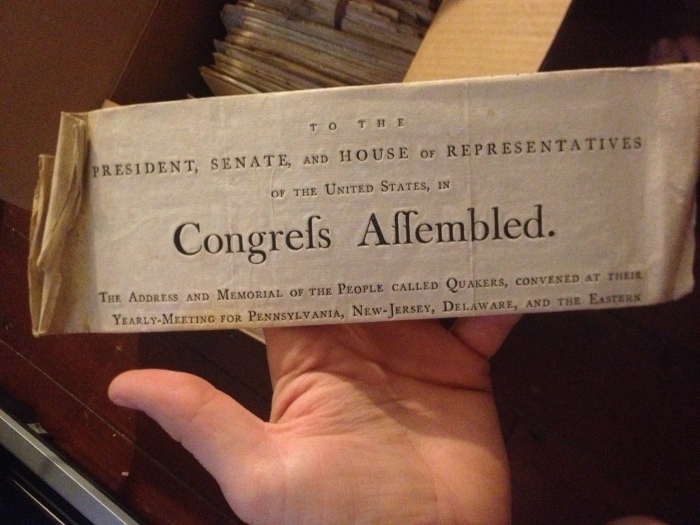



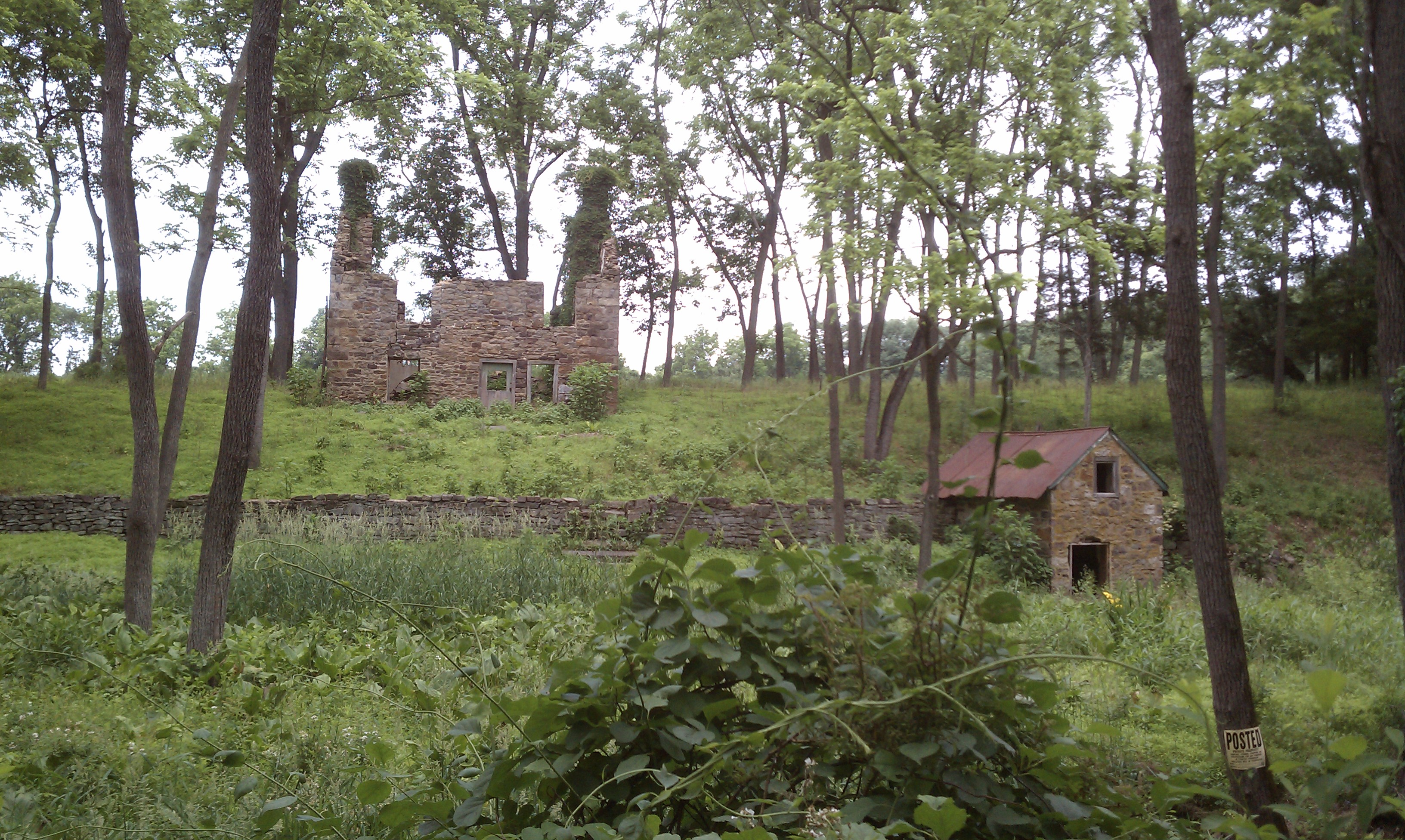

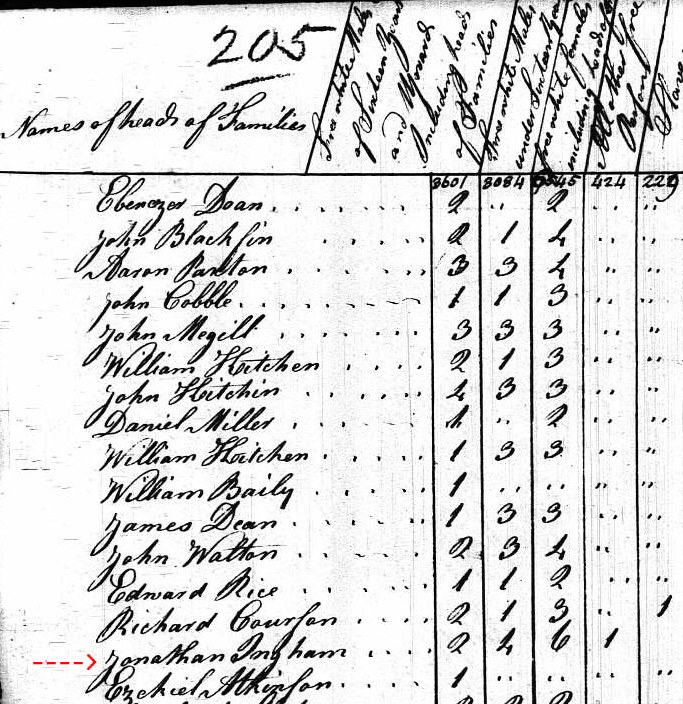
 Sugan is a hand-braided rope made of straw, usually used for seat covers or cheap saddles. In this case, the resourceful early farmers of Solebury harvested their grain and then used the remaining stalks of straw to weave their grain sacks.
Sugan is a hand-braided rope made of straw, usually used for seat covers or cheap saddles. In this case, the resourceful early farmers of Solebury harvested their grain and then used the remaining stalks of straw to weave their grain sacks.








